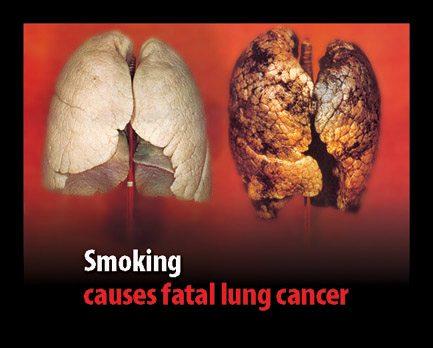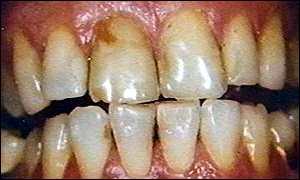Introduction
There is no doubt that most people in the world (especially those who live in developed countries) know that smoking is harmful to health. They know that it may lead to the development of cancer and painful death. Despite this awareness, the level of smoking remains high in many countries in the world and the United Kingdom, in particular. According to data provided by Action on Smoking and Health, the number of smokers comprises ten million in Great Britain in 2015. It is a sixth part of the overall population of the United Kingdom. What concerns male to female ration, more men (twenty-two percent) than women (seventeen percent) smoke. The prevalence of smoking almost doubled since the 50th of the previous century (ASH 2015). Young people from twenty-five to thirty-four years old smoke most of all. In should also be noted that almost third part of these smokers think about quitting but only half of them makes attempts to give up smoking. Finally, results of the survey demonstrate that smoking rates are much higher among people with low socioeconomic status. In the following paper, issues of health promotion and smoking, in particular, will be evaluated and analysed on the basis of facts from the United Kingdom.
Effects of Socioeconomic Influences of Smoking on Health
Tobacco abuse is regarded as the most common reason for premature death in industrial countries. There are many discussions concerning the number of deaths from smoking-related diseases. Nevertheless, statistical data prove that smokers do not live long. According to Jefferis et al. (2004, p. 279), “Throughout adulthood, socioeconomic disadvantage is associated with persistent smoking, whereas higher socioeconomic status is associated with higher rates of smoking cessation”. Socioeconomic influences have a direct relation to the health condition of people. Socioeconomic status defines person’s position in the society based on such factors as professional activity, occupation, and income. The incidence of premature death, diseases, and disabilities is higher in people with low socioeconomic status.
People with low socioeconomic status are more likely to consume more tobacco. These people are affected by the so-called double negative effect. First, they smoke more cigarettes a day. Second, they smoke heavier cigarettes and consume more nicotine. Consequently, their health condition worsens. Due to the lack of financial resources and social support, poor people cannot undergo timely checks and afford all necessary treatment as well (Hiscock et al. 2012).
Relevance of Government Sources in Reporting On Inequalities of Health
Two governmental sources will be taken for the evaluation of the efficiency of reporting on health inequalities in the British society. The first source is website GOV.UK. It is the best source for finding information about governmental services. One can access a variety of studies concerning the examination of health inequalities in the United Kingdom (Statistics n.d.). For instance, the latest source devoted to inequality is “Poverty and Income Inequality in Scotland 2013-14”. The source contains all necessary information about poverty, causes, and statistics.
The second source is the website of the Office of National Statistics. When looking for information about health inequalities, one can find numerous summaries (Health Inequalities n.d.). Many reports refer to the evaluation of well-being of residents of the state. Thus, the Office of National Statistics provides relevant information about health inequality in the United Kingdom.
Reasons for Barriers to Accessing Healthcare
An equal and free access to health care services is a right of every resident of the United Kingdom. Health care services should treat all patients in the same way. Nevertheless, barriers to accessing services still exist. In most cases, representatives of ethnic and black minority population suffer from these inequality issues. Nowadays, approximately eight million people from all population of the UK belong to ethnic minorities. It is almost fourteen percent of the overall population (Up to 30% of UK population will be from ethnic minorities by 2050 2014). All of them should be treated appropriately. There are several reasons for barriers to accessing services. They may be divided into extrinsic and intrinsic reasons. The first intrinsic reason refers to cultural differences. For instance, Gypsy travel families follow the rule of the strong gender division. Thus, their religion does not allow them to talk to the stranger about personal things. Consequently, Gypsies refuse to visit doctors (Fair Access for All? 2010). The other barrier refers to the lack of linguistic competence. Representatives of ethnic minorities often speak their native languages and cannot express their ideas with the help of the English language. As a result, it is rather challenging to identify symptoms.
According to Szczepura (2004), extrinsic reasons are connected with organizational factors. The first extrinsic reason concerns various needs. People from ethnic minorities may suffer from peculiar diseases typical for their populations. Healthcare centres may not have necessary equipment or medicine to provide appropriate treatment. The second reason is the location of health care services. Mobile populations usually live far from medical centres, and, when necessary, cannot access it quickly. Finally, racism and biased relations form the third reason for barriers. Staff members can provide inappropriate services because of their prejudices or even racism. These issues affect the well-being of patients and their further desire to use services.
Consequences of Smoking
According to the data of the National Health Service, almost one hundred thousand people die of smoking in the UK. Smoking may cause the development of irreversible and fatal diseases. Smoking is harmful not only for those who smoke but for people who breathe one’s smoke. The most disturbing health risk is lung cancer. The following picture demonstrates the devastating effect of smoking on lungs (Smoking causes fatal lung cancer n.d.).

Smoking damages the condition of skin. It also destroys tooth enamel. The example of teeth of smoker is presented below (Unwhitened teeth n.d.).

Also, smoking causes heart conditions, chronic bronchitis, pneumonia, or impotence in men. Secondary smoking is also harmful. It may lead to chronic coughing or asthma (What are the health risks of smoking? n.d.).
Benefits of Stopping Smoking
Quitting smoking has many advantages. They are as follows:
- Prolonged lifespan;
- Better circulation and lower risk of heart diseases;
- Improved smelling and tasting senses;
- Easy and clear breathing;
- Better physical appearance (the colour of skin and teeth improves);
- Risk of lung cancer decreases by half.
Conclusion
Smoking is a severe problem in modern society. People smoke despite their awareness of harmful effects. Surveys show that most smokers are people with low socioeconomic status. A variety of barriers such as cultural differences, lack of resources, prevents people from accessing healthcare services. Health promotion is of great significance for the improvement of health conditions of all residents.
Reference List
ASH 2015, Smoking Statistics, Web.
Fair Access for All? 2010, Web.
Health Inequalities n.d., 2015, Web.
Hiscock, R, Bauld, L, Amos, A, Fidler, J & Munafo, M 2012 ‘Socioeconomic Status and Smoking: Review’, Annals of the New York Academy of Sciences, vol. 1248, no. 1, pp. 107-123.
Jefferis, B, Power, C, Graham, H & Manor, O 2004, ‘Effects of Childhood Socioeconomic Circumstances on Persistent Smoking’, American Journal of Public Health, vol. 94, no. 2, pp. 279-285.
Smoking causes fatal lung cancer n.d., image, 2015, Web.
Statistics n.d., 2015, Web.
Szczepura, A 2004, ‘Access to health care to ethnic minority’, Postgraduate Medical Journal, vol. 81, no. 953, pp. 141-147.
Unwhitened teeth n.d., image, 2015, Web.
Up to 30% of UK population will be from ethnic minorities by 2050 2014, Web.
What are the health risks of smoking? n.d., 2015, Web.